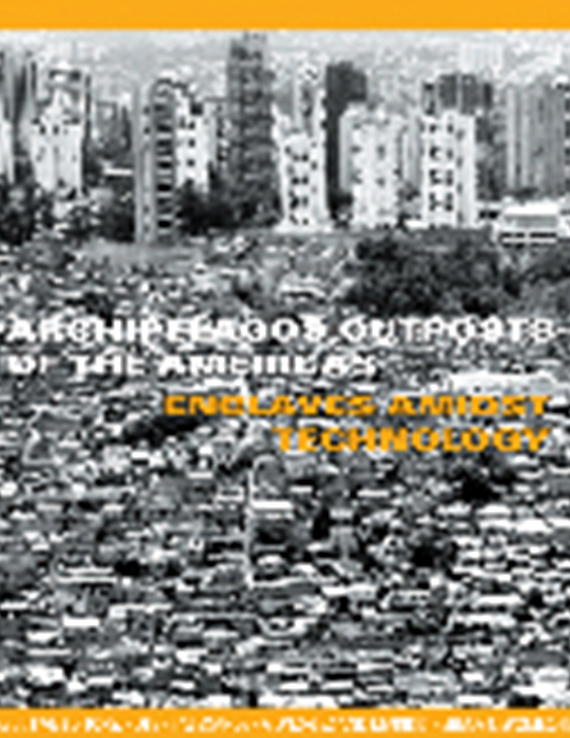Author(s): Christopher Calott
Where an ecotone occurs, there is more life and life is louder because two or more groups of plants and animals overlap, boosting life’s pitch and intensity. The border is now a place where a huge ecotone of flesh and capital and guns is rubbing up against itself as two cultures and two economies and two languages meet and mingle and erupt into something we cannot yet name. Charles Bowden, Juarez: The Laboratory of our FutureA place where first- and third-worlds collide, the U.S./Mexico border region where El Paso, Texas meets Ciudad Juarez, Mexico is an urban and cultural experiment where marginality, centrality and cultural identity are constantly in flux. With a population of 2.5 million and growing at over five percent a year, this is the world’s largest border community, a place where economically marginalized maquiladora workers are becoming the center of the global economy, where informal shanty-town urbanism is rapidly becoming the normal mode for growth in developing cities throughout the Americas. Anapra is a 30,000-person squatter settlement on the outskirts of Ciudad Juarez which practically emerged overnight and literally crashes into the international border and is met by an INS fence. Anapra: An Anatomy of the Border describes the numerous frameworks used in this place’s struggle to construct community, identity and remarkably, to structure a vivid sense of urban coherence. The 14 bi-cultural cities at the U.S./Mexico border have expanded rapidly in the past decade due to the economic growth fueled by maquiladora programs implemented through NAFTA. As a result of this developmental shift, there has been a mass migration of Mexicans in search of work into the border region. New arrivals to the border most often land in unregulated colonias, on either side of the border. As a form of stealth urbanism, these developments are characterized by illegal land occupation, lack of official recognition, self-built housing and no basic infrastructure or human services. This type of informal urbanization is a global phenomenon in developing countries, now the rule rather than the exception. However, the fact that these informal settlements fall outside planned or municipal mechanisms, not conforming to disciplinary Architecture or Urban Design practices, does not invalidate a series of maneuvers and strategies which amount to a very coherent form of community construction. This paper will trace Anapra’s extraordinary development and illustrate its residents’ struggle to fashion a political and spatial urban entity in the highly contested socio-economic terrain of the border. It will also directly address the topic issues of community, culture and identity in this place of such flux that even the terms used to name the inhabitants are in constant change. Called Borderlanders, Amexicans and Frontierizos, these inhabitants are forging a new region. Regarded as an outpost by any nationalistic or geographic standard, this region is ironically becoming a centerpiece of the global economy and a norm for new third-world urban developments. In Ciudad Juarez, as in Mexico City, Sao Paulo, Caracas or Lima, architects, planners and city governments have lost the battle to effectively house massively growing urban populations. These marginalized places have been ignored by both the professional design culture and by the academy. The Anapras of the Americas therefore exist by default, operating as urban outposts within their own City. Yet the impromptu urban development of Anapra exhibits an extraordinary amount of planning flexibility, progress and pragmatism. A form of “bottom-up” planning, these informal urban settlements often display a highly sophisticated developmental process which leads to a level of social interaction, plurality, community participation and spatial complexity to which more traditional planned communities can only aspire. Anapra: An Anatomy of the Border is the result of a bi-national interdisciplinary research investigation conducted in Anapra by Architecture, Landscape Architecture and Urban Design students from two U.S. and one Mexican university, as well as the planning arm for Ciudad Juarez. The issues presented in this paper are provocative, timely, sobering and very real. The paper challenges academics and design professionals to consider and more deeply engage this dramatically emerging urban form which is increasingly defining the Outposts of the Americas.
Volume Editors
Marilys R. Nepomechie & Robert Gonzalez
ISBN
0-935502-54-8

 Study Architecture
Study Architecture  ProPEL
ProPEL 
